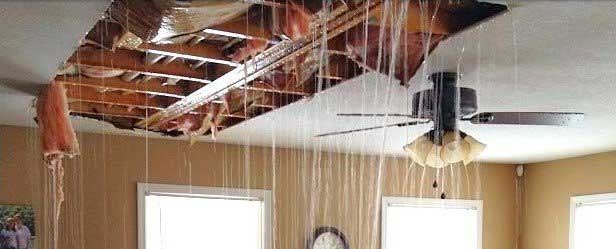Do's & Don'ts of Water Damage.
Do's & Don'ts of Water Damage.
Blog Article
The content down below in relation to 5 Home Safety Tips To Reduce The Risk Of Fire And Water Damage is incredibly fascinating. Don't skip it.

Water offers life, water breach on components where it's not supposed to be can result in damage. If the water saturates right into your framework, it can peel away surfaces and erode the foundation. Mold as well as mold also grow in a wet atmosphere, which can be hazardous for your health. Residences with water damages scent stuffy as well as old.
Water can originate from numerous sources such as tropical cyclones, floods, ruptured pipelines, leakages, as well as sewer issues. In case you experience water damage, it would certainly be good to understand some safety precautions. Right here are a couple of guidelines on how to manage water damages.
Do Prioritize House Insurance Coverage Insurance Coverage
Water damage from flooding as a result of heavy winds is seasonal. You can likewise experience an abrupt flooding when a faulty pipeline unexpectedly breaks into your home. It would be best to have home insurance coverage that covers both acts of God such as all-natural catastrophes, and also emergency situations like damaged plumbing.
Don't Fail To Remember to Shut Off Utilities
This reduces off power to your whole house, stopping electrical shocks when water comes in as it is a conductor. Don't forget to transform off the main water line shutoff.
Do Stay Proactive and also Heed Weather Informs
Tornado floodings can be extremely unpredictable. Remain prepared and also positive if there is a background of flooding in your neighborhood. If you live near a creek, river, or lake, listen to discharge warnings. Obtain valuables from the first stage and also basement, after that put them on the greatest possible level. Doing so lowers potential residential property damage.
Don't Disregard the Roofing System
You can avoid rain damage if there are no holes and also leakages in your roofing system. This will protect against water from moving down your wall surfaces as well as soaking your ceiling.
Do Pay Attention to Tiny Leakages
A burst pipeline doesn't happen overnight. Typically, there are warnings that show you have actually damaged pipelines in your home. For instance, you might observe gurgling paint, peeling off wallpaper, water streaks, water discolorations, or leaking sounds behind the walls. At some point, this pipe will break. Ideally, you ought to not await things to intensify. Have your plumbing fixed prior to it results in massive damages.
Do Not Panic in Case of a Ruptured Pipe
Keeping your clearheadedness is important in a time of situation. Since it will certainly suppress you from acting quickly, panicking will just intensify the issue. When it comes to water damages, timing is crucial. The longer you wait, the even more damages you can expect. Thus, if a pipeline bursts in your residence, immediately shut down your primary water valve to remove the resource. Disconnect all electrical outlets in the location or turn off the circuit breaker for that component of the home. Finally, call a credible water damages repair expert for help.
Water gives life, water intrusion on components where it's not meant to be can result in damages. Homes with water damages odor mildewy as well as old.
Water damage from flooding fees to hefty winds is seasonal. You may see gurgling paint, peeling wallpaper, water streaks, water spots, or dripping audios behind the wall surfaces. When it comes to water damage, timing is crucial.
Water Damage Do's and Don'ts
Do's
Always use rubber gloves to protect your hands & rubber boots to protect your feet and legs. Damage from water and bacteria growth can begin within hours. Call for professional help. Remove as much water as possible by mopping and blotting with sponges. Pull up wet rugs and carpets if hardwood floors are below. Lift draperies off the floor, loop through a coat hanger and place the hanger on the drapery rod. Wipe furniture, prop up wet furniture cushions for even drying and place aluminum foil under furniture legs. Move photos, paintings, art objects, computers, other electronics and valuables to a safe, dry location. Do not remove books from shelves. Pack them tightly to prevent page warping until a restoration professional can begin this specialized drying. Ventilate wet areas. Turn on air conditioning for faster drying in summer (only if there is no visible mold) and winter, alternate cycles of opened windows and heating. Also, open drawers, closets and cabinet doors to enhance drying. Don'ts
Do not enter rooms where there is wet and sagging ceiling! Do not enter a room with standing water until electricity has been turned off. Do not use a regular household vacuum to remove water. Use heat to dry closed building interiors. Mildew and more moisture damage can occur. Do not use electrical appliances while on wet carpet or flooring. Do not disturb visible mold. https://www.myknowledgebroker.com/blog/personal-insurance/water-damage-dos-and-donts/

As a keen reader on 5 Home Safety Tips To Reduce The Risk Of Fire And Water Damage, I was thinking sharing that portion was important. Sharing is good. You just don't know, you might be doing someone a favor. Thanks for your time. Come back soon.
Report this page